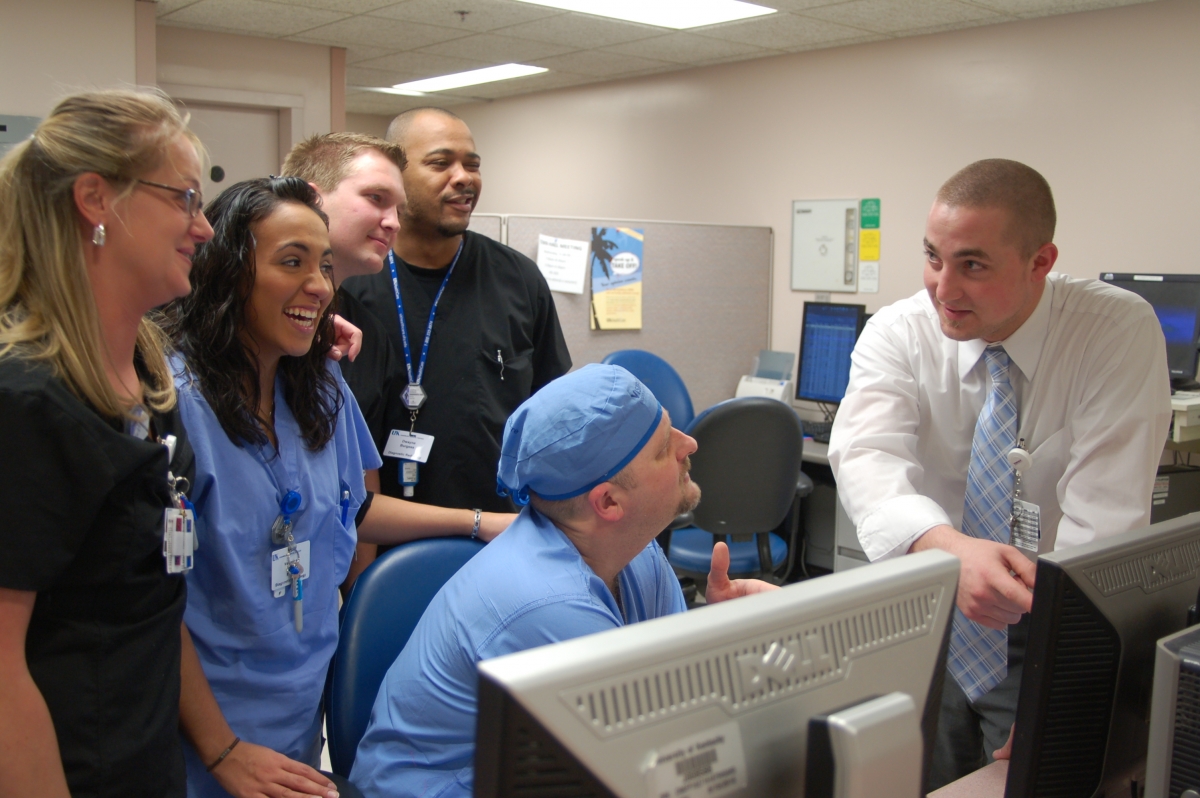Clinical Leadership and Management: Shining a light on behind-the-scenes careers in health care
What’s the first image that comes to mind when you think of the medical profession? Doctor? Nurse? Surgeon? While these careers might serve as the face of health care, there are countless others behind the scenes of hospitals and clinics—health care managers, administrators, and more—who are responsible for bringing in the analytical and business skills that keep our health care system functioning.
“Often, students say to me, ‘I know I want to be in medicine, but I don’t want to be a clinician—I want to serve more on the business side of health care,’” said Sarah Kercsmar, PhD, director of undergraduate studies and assistant professor in clinical leadership and management (CLM). “So, we introduce them to clinical leadership and management. It’s geared toward students who want to become health care managers somewhere down the road.”
The UK College of Health Sciences’ CLM program provides students the opportunity to become familiar with another side of health care. “The administrators in our world are the ones who are hiring all of our providers. This demands an analytical, systems-based approach,” Kercsmar explained. “They also bring to the table business skills that our clinicians often aren’t trained in.”
The major doesn’t limit students’ options to administrative positions, though. “When our students graduate, they can do a whole host of things,” Kercsmar continued. “Sometimes they work as patient navigators or practice managers in a hospital. Some go on to become pharmaceutical sales reps or leaders in health care nonprofits. CLM provides this basis of skills in leadership, finance, human resources (HR), business, and communication needed to be successful in a variety of health care administration fields.”
Occasionally, CLM graduates even go on to practice themselves. “Some students decide later that they want to couple the administrative piece with some sort of provider experience,” Kercsmar said. “It’s not unheard of for our graduates to attend nursing school which positions them to quickly climb the ranks to nurse manager once they begin practice.”

This year, the CLM curriculum received a facelift that focuses on training majors to keep pace with the changing nature of health care. Throughout their first two years, students take their UK core classes while developing an understanding of inter-professionalism and exploring their career options. “One of the things we found was that students knew they wanted to work as health care administrators but weren’t exactly sure what the position required,” Kercsmar said. “We decided it was better to have that conversation when students were freshmen instead of seniors.”
Students start with the broader, more systems focused courses and then progress to more specific content area courses. “They’ll take classes in health information management, quality improvement, health policy and law, and ethics,” Kercsmar said. “Then students start their leadership series, which is a series of three leadership classes in interpersonal competencies, strategic planning, and HR management.”
Simultaneously with their leadership series, students also begin their practicum sequence. “There are so many things students can do with a career in health care administration, and practicum is a wonderful opportunity to explore, learn, and grow,” said Karen Clancy, PhD, MBA, BHS, MT, who supervises the CLM practicum. “Students can examine different roles and areas of health care while building their resumes and networks. They can also include their practicums on their resumes in order to demonstrate skills to potential employers—it’s the best way for students to get direct access to CLM opportunities in the health care field.”
The practicum series includes three courses in a sequence. The first is Practicum Foundations—designed for students who are just getting started in health care. Students will meet in class for one hour each week to learn about professionalism, patient experience, communication, and leadership practice. They will also be at the practicum sites four hours per week to obtain applied experience.
The next two practicum courses consist of Intermediate and Advanced Practicum. These courses are designed to have more concentrated time at practicum sites to immerse students in clinical leadership and management activities. Practicum offers students opportunities to meet and shadow health care professionals, participate in the administrative work of their sites and practice the skills they’ve learned through “hands-on” projects. Students get a chance to work on all kinds of projects including work on quality initiatives, patient experience projects, business projects and many more.
Practicum Foundations is completed in the junior year. After their first practicum experience, students finish their final year completing their remaining courses and practicum experiences.
“The last semester is incredibly hands-on,” Kercsmar said. “Our students will take two leadership classes in the first eight weeks, and then for the rest of the semester they work 20-30 hours a week in two different practicum sites. The other valuable aspect to this is that our students are better prepared for advanced studies and many of them end up getting job offers because of their practicum sequence.”
After graduation, the job prospects are very promising. “The Bureau of Labor Statistics says we’re looking at a 20 percent growth in the field between now and 2026,” Kercsmar added. “As we talk about the aging population, there are jobs being created in all areas of health care. The future is looking really bright.”